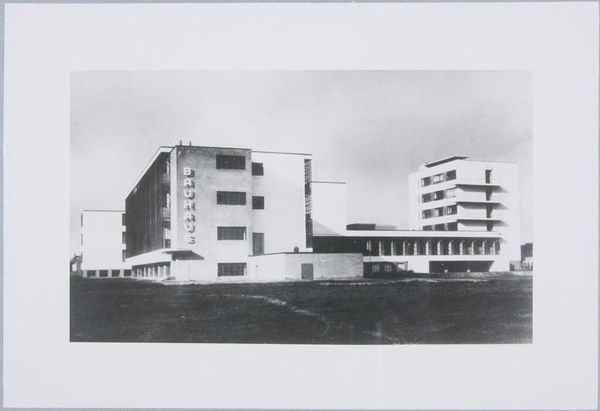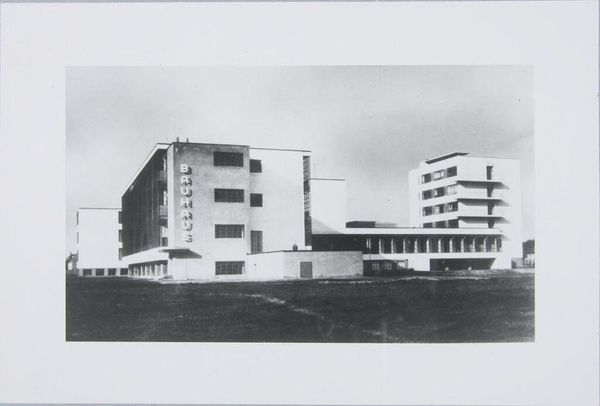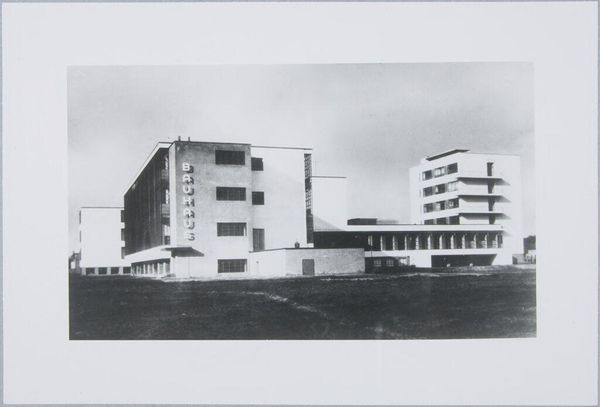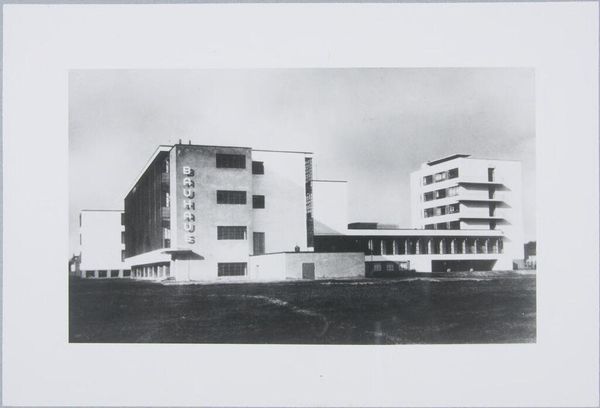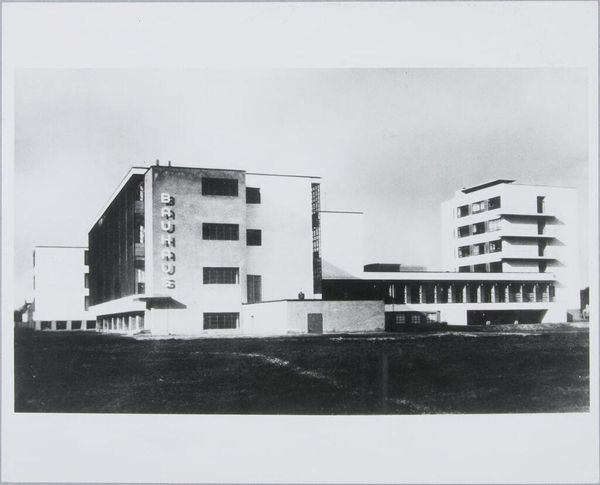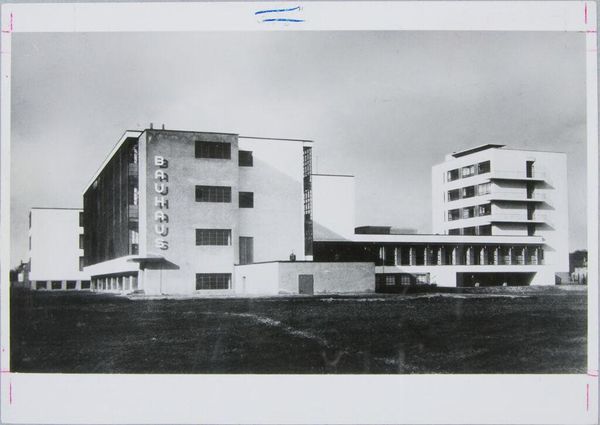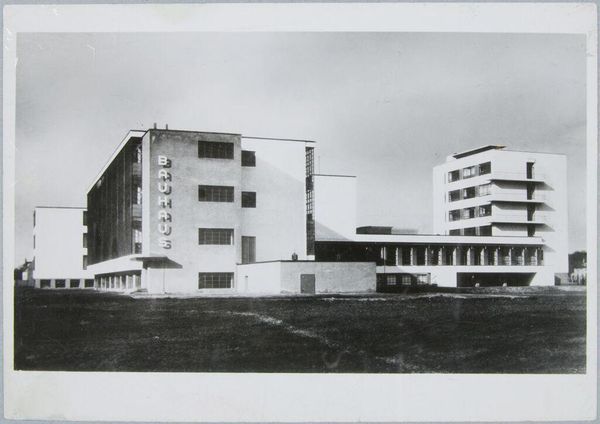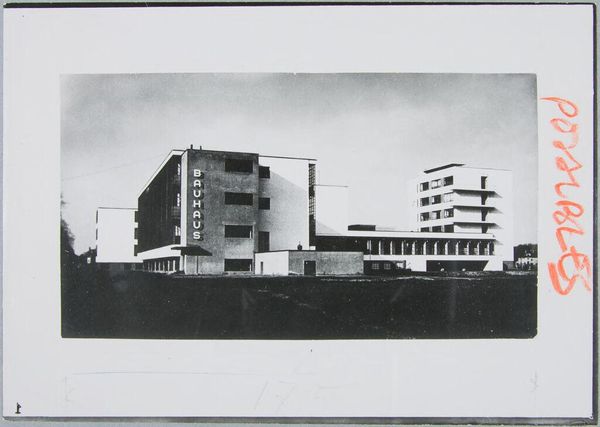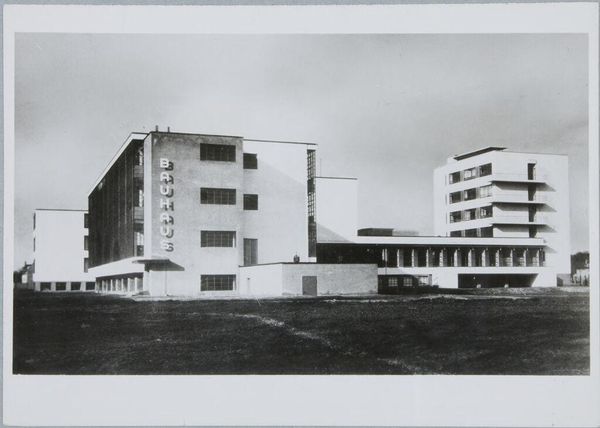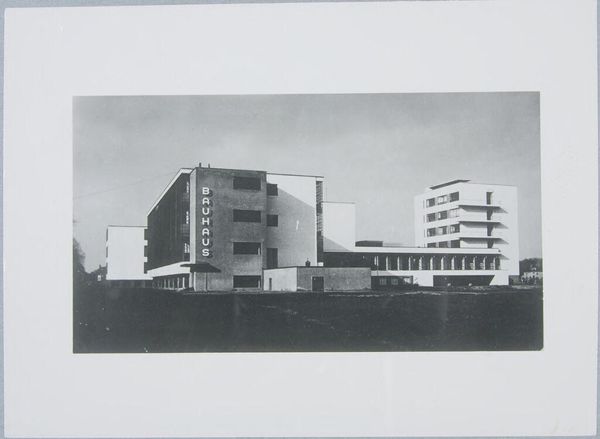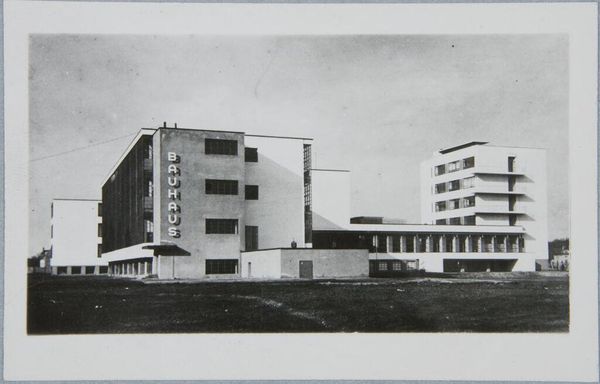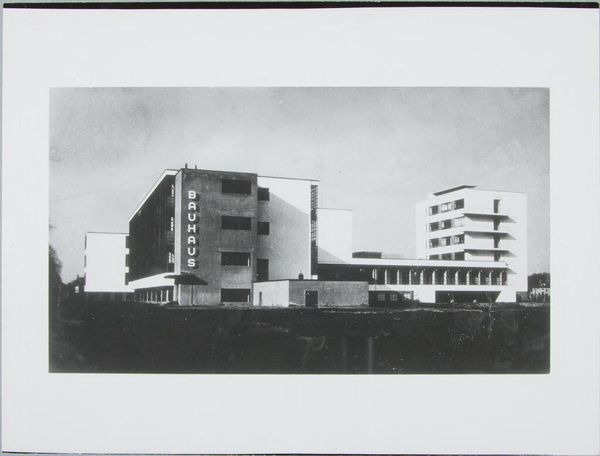
Bauhaus Building, Dessau, 1925-1926: View from southwest after 1926
0:00
0:00
Copyright: CC0 1.0
Curator: Klaus Hertig captured this view of the Bauhaus Building in Dessau between 1925 and 1926. Editor: Its severe geometry and high contrast give it a powerful, almost unsettling, sense of order. Curator: Indeed. This photograph documents a pivotal moment. The Bauhaus, under Walter Gropius, was attempting to unify art, craft, and technology into a radical new design aesthetic, born of post-WWI anxieties and utopian ideals. Editor: The functionalist design, the stark planar surfaces, and the almost complete absence of ornamentation reflect this ethos. The building itself becomes a manifesto, rejecting historical styles in favor of an aesthetic that embraces industrial production. Curator: Absolutely. The building literally embodies the Bauhaus ambition to shape modern life. Its open structure fostered collaboration, while its design aesthetic challenged conventional notions of beauty and utility. Editor: It's a fascinating artifact, then, not just for its visual qualities, but for what it reveals about the social and political ambitions of the Bauhaus movement. Curator: Yes, and considering the historical context is essential to appreciating the building’s enduring impact on architecture and design. Editor: Agreed, considering its cultural legacy lets us see beyond the surface.
Comments
No comments
Be the first to comment and join the conversation on the ultimate creative platform.
